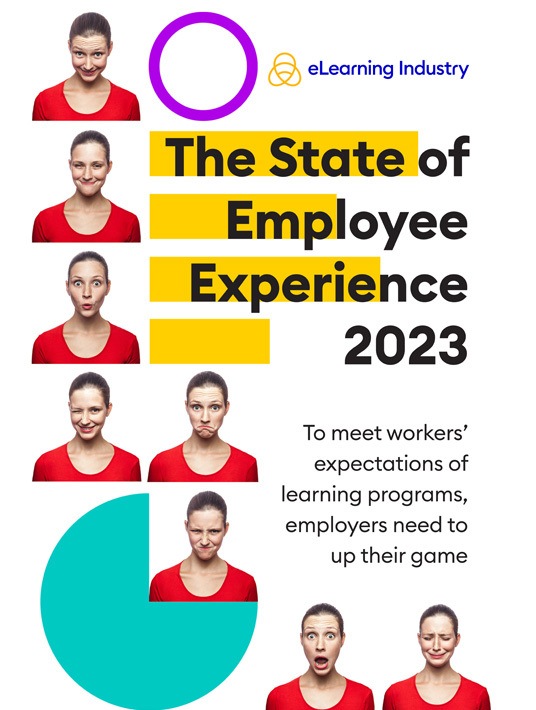How To Design Onboarding Online Training For Generation Z Corporate Learners
There’s a joke doing the rounds on Twitter. It quotes a teenager at a job interview. She/He says, ‘I’ve been described as an old soul, so I identify and connect with Millennials’. Yes, they have finally joined us in the annals of the ‘aged’. Move over Gen Y… it’s time for Gen Z. Sometimes labeled iGen, these youngsters were born after 1995 and are now entering the workforce. We’ve spent the last decade demystifying Millennials. Now there’s a whole new demographic to work around. How fast can we learn to speak their language? Below are 7 top tips to design onboarding online training for Generation Z corporate learners.

10 Tips To Train Gen Z New Hires
1. Day One
Most new hires are nervous when they show up on the first day. They don't know how to clock in or where to find their workstations. Everything is unfamiliar, which can wreak havoc on their self-confidence. However, you can give them firsthand onboarding experience before they even arrive in the office. Real-world simulations offer them the chance to explore every aspect of the job. They can take a virtual walk through the workplace, find out where everything is, and familiarize themselves with the equipment. These simulations help clarify expectations and job responsibilities so that there isn't any confusion later on. When the first day rolls around, they can venture into the office with their heads held high. Anxiety and stress is no longer a hurdle they need to overcome because they have experience under their belt.
2. Virtual Seating Chart
Your Gen Z version of the ever-popular seating chart should include contracts, job descriptions, and terms of reference. It can also include their new email logins so they can access their onboarding kit. Remember, iGen is research-based. They google everything, so align yourself to their data-driven outlook. Incorporate practical aspects, like a virtual office tour. Show them where they’ll be working, who to ask when they get stuck, and where the bathrooms are. When you design onboarding online training courses, you can also guide them on office policies and commuting options. This kind of online training for Generation Z gives a good first impression and makes them feel less like a lost freshman. It's especially useful for those dealing with strict COVID safety precautions. For instance, they need to know the social distancing norms and how to properly decontaminate their workspace.
3. Lead With Data
While many members of Generation Z learn by doing, their approach is different from ours. We mostly dove into things headfirst. We arrived at work on Day One and asked the boss what to do. Or we just followed people around the office until we figured things out. iGen employees form a case file even before they apply. They know the CEO’s name and their favorite breed of fish. Onboarding online training for Generation Z employees should allow for this. Use the same attention to detail they would, but include onboarding online training content they can’t find on their own.
For example, start the onboarding online training course with a brief summary of what the content entails, how long it should take, and the real-world benefits. Include a company origin story so that they get a feel for your identity and company culture. This personalizes the online training experience rather than simply asking them to plug into the data stream and absorb facts and stats.
4. Teach Some Tasks
They’ve probably googled, ‘What’s it like to work at XYZ’ or ‘What’s a typical first day as an *insert job title*.’ Onboarding online training for Generation Z learning should focus on the typical tasks you’ll assign them on their first day, week, or month. Present templates and simulations for those tasks to let them know what to expect. You can also develop brief how-to videos and build a comprehensive and easy-to-navigate archive. Choose the most important processes that new hires must perform from day one –everything from ‘how to program the printer’ to ‘how to request time off.’ Break them down into sub-tasks and skills, then develop an online training scenario highlighting each step. To add more realism, incorporate images and sounds from the workplace, as well as relatable characters. These resources provide new hires with the practical knowledge and experience they need to overcome common on-the-job challenges.
5. Short And Stimulating
iGen is used to bite-sized chunks, whether it’s texting lingo or 10-episode seasons. Whatever online training material you generate has to abide by this. Limit chunks of text to 5-minute-reads, and keep videos below 60 seconds. Your online training content, whether they’re words, pictures, or ambient sound links, should offer an immersive multimedia experience. Use strong visuals, vibrant colors, and high definition. They’re used to having all their senses engaged, both at work and during play. Incorporate these elements if you really want to reach them.
6. Multimedia
Develop onboarding online training for Generation Z that’s accessible via mobile, with or without a data connection. For example, invest in an LMS that supports offline mobile. Smartphones are the tools iGen most frequently engages with. Use it to your benefit. Designing for mobile will also prime you to keep your online training content concise. You should include lots of serious games. This won’t necessarily lighten the levity of your online training course, so don’t worry. After all, iGen usually takes their gaming very seriously. Merging work and play is a great way to keep them engaged. Plus, gamification is a proven aid to recall and an effective online training tool.
7. Peer Coaching
The older generations in your team have a vast amount of experience to offer your Gen Z new hires. They have been in the industry for years and are ready and willing to share their expertise. So, develop a peer-based coaching program that allows them to pair up and share skills. Gen Z employees can help those who may not be as tech-savvy, while more mature co-workers can show them the ropes and offer troubleshooting tips based on their area of expertise. Use web conferencing software tools and private messaging systems to help them stay in touch. You can also create social media pages and discussion forums when organizing mentorship groups. The secret to online mentoring success is to clarify expectations and roles in advance. Let everyone know how they must participate, when they will communicate, and how you'll check their progress.
8. Departmental Forums
Every department in your organization should have a separate forum or blog where they can communicate. New hires are able to log in to the online platform to learn from their co-workers and ask questions. In fact, you may want to have a special forum thread for employee introductions. This gives everyone the opportunity to familiarize themselves with their colleagues, even if they are on another continent. Provide your employees with a list of talking points, and encourage them to reach out to new hires. It's also wise to assign a moderator for each board who can keep the group on topic and enforce the netiquette for the online discussion. There are also a variety of social media sites that feature closed groups, such as Facebook and LinkedIn.
9. Serious Games As Online Assessments
One of the things that Gen Z dreads about the onboarding process is the final online assessment. Many organizations use online exams and quizzes to determine whether employees were paying attention. Thus, they are typically dull and tedious, because they only test basic knowledge. However, you have the power to transform your online assessments into engaging and exciting serious games. These serious games can test every aspect of your online training, from company policies to workplace tasks. Instead of taking a multiple-choice exam, new employees have the chance to take a virtual journey or participate in an online quiz show.
10. Online Presentations To Build Brand Awareness
Every employee in your organization is a brand representative, even if they never come into contact with your customers. Thus, building brand awareness is an important part of your online onboarding training. Your new employees must know about the company's history, brand message, and corporate culture before entering the workplace. They have to be passionate about your brand and know what you stand for. Many organizations still use printed manuals and guidebooks to convey this information, but this usually doesn't reflect the personality of your brand. Online presentations, on the other hand, are immersive, interactive, and engaging. You can customize every aspect of the online video so that it aligns with your brand image. The background music, color scheme, narration, and images form a complete picture of your corporate culture. You also can incorporate links to online training tutorials, activities, and third-party online resources to enrich the online training experience.
Conclusion
Training employees can be challenging, especially when there’s a generation gap involved. And now the iGen is taking control of the reigns, we have to keep up, for all our sakes (it’s profitable too – keep them happy and they’ll make you more money). Before they start work, send them a prep-pack with virtual tours of the physical office space. Offer practical, task-based online training for Generation Z as part of their onboarding. Create an online training library of how-to’s they can refer to at will. Keep online training modules short, sweet, and easily navigable. As a result, you'll increase employee engagement, improve the online training ROI, and reduce employee turnover, which means fewer online onboarding training sessions in the future.
Our eBook From New Recruits To Rising Stars: Using Employee Onboarding Software To Help New Talent Reach Their Full Potential has all the information you need to train Gen Z staffers. Or any generation, for that matter. It covers everything from popular onboarding myths to ROI-boosting training tips.







